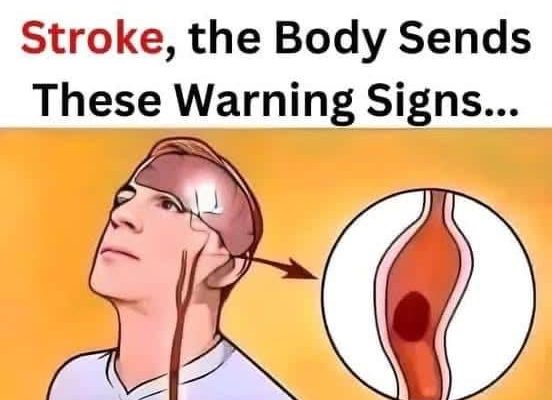:max_bytes(150000):strip_icc():format(webp)/GettyImages-1367021616-92519c6e624f4e66b4dfc33c767f51e3.jpg)
It’s not always possible to predict a stroke one month before, but warning signs can include feeling dizzy all of a sudden, experiencing a severe headache, or having vision problems.1 Some people who have a stroke had a transient ischemic attack (TIA), or mini-stroke, within 90 days prior. TIA symptoms can include a loss of balance and changes in alertness.23
Your risk of having a stroke increases as you get older, as with many other health concerns. Your stroke risk nearly doubles every 10 years after age 55.4 Strokes still can and do happen at any age. Research has found that strokes generally have been on the rise in younger people since 1990.5
Knowing the early signs of stroke is helpful regardless of age. Read on to learn about the possible early warning signs of a stroke.
Can There Be Warning Signs One Month Before a Stroke?
TIA, also known as a mini-stroke, is the result of a brief stop in blood flow to the brain. It’s one of the warning signs that a future stroke could occur: Around 20% of people may develop a stroke within 90 days of a TIA.23
TIA symptoms are the same as those of stroke. They might include signs like changes in alertness or senses, muscle issues, or loss of balance.2
Additional early signs of stroke to look for include sudden:1
- Confusion or difficulty understanding speech
- Difficulty walking
- Experience of dizziness or coordination
- Severe headache with an unknown cause
- Vision problems occurring in one or both eyes
- Weakness or numbness of the legs, especially if it’s one-sided
Act F.A.S.T.
Using the acronym F.A.S.T. can help you remember the common symptoms to look for and when to call 911:6
- Face: Look for signs of facial drooping or numbness.
- Arm: Determine any arm weakness or numbness.
- Speech: Listen for slurred speech.
- Time: Call 911 if any of the symptoms are present.
How To Prepare
Strokes can happen to anyone at any time. Knowing the signs of stroke can help you get quick medical attention. Another way to prepare is to keep a list that includes the hospital closest to you with a 24-hour stroke facility. Make a note of any medications you take or that have caused allergic reactions.
Be aware of any stroke risk factors you may have, which can include:47
- Age
- Diabetes
- Family history
- Heart disease
- High blood pressure or cholesterol
- Lifestyle factors, like not getting regular physical activity, using tobacco, and drinking excess amounts of alcohol
- Obesity
- Previous strokes or TIAs
- Sex
- Sickle cell disease
What To Do if You Think You’re Having a Stroke
Seek medical attention right away in the case of a stroke. You’ll want to call for an ambulance instead of driving or having someone else take you to the hospital. An ambulance can allow medical staff to start care on the way to the emergency room.8 Tell the 911 operator and medical team that arrives if you’re specifically concerned you’re having a stroke. They may be able to bring you to a specialized stroke center.
Don’t give up if an emergency room provider diagnoses you with something else. Strokes and TIAs can mimic symptoms of conditions like an inner ear infection or a migraine. Therefore, it is not uncommon for strokes, especially posterior cerebral artery strokes, to be missed or misdiagnosed.
Ask a healthcare provider this question: “Why do you think it’s not a stroke?” Look for a reasonable response. Seek out a second opinion if they don’t answer your question clearly or if you don’t feel confident in their response.



